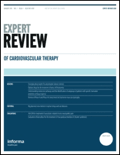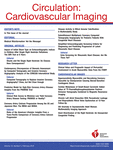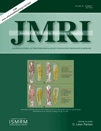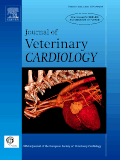
Current Cardiovascular Imaging Reports
Scope & Guideline
Exploring the Future of Cardiovascular Diagnostics
Introduction
Aims and Scopes
- Cardiovascular Imaging Techniques:
The journal emphasizes various imaging modalities, including echocardiography, cardiac magnetic resonance (CMR), computed tomography (CT), and positron emission tomography (PET), focusing on their diagnostic and prognostic capabilities in cardiovascular diseases. - Clinical Applications and Innovations:
There is a strong focus on the clinical applications of imaging techniques, exploring how advancements can enhance patient management, therapeutic decisions, and outcomes in cardiovascular care. - Interdisciplinary Research:
The journal encourages interdisciplinary research that combines imaging with other fields, such as machine learning, molecular imaging, and clinical therapeutics, to foster innovation and improve diagnostic accuracy. - Emerging Technologies and Methods:
The journal aims to highlight the development and validation of new imaging technologies and methodologies, such as radiomics and virtual physiological assessments, to enhance the understanding of cardiovascular conditions. - Education and Knowledge Dissemination:
A commitment to cardiovascular education is evident, with articles that aim to inform clinicians about the latest developments in imaging and their implications for practice.
Trending and Emerging
- Machine Learning and AI in Imaging:
The integration of machine learning and artificial intelligence in imaging analysis is gaining traction, suggesting a shift towards automated and enhanced diagnostic capabilities that can improve accuracy and efficiency. - Post-COVID-19 Cardiovascular Insights:
With the ongoing study of the cardiovascular implications of COVID-19, there is an increasing focus on understanding post-acute sequelae, highlighting the need for comprehensive imaging assessments in affected patients. - Molecular Imaging and Radiotracers:
Emerging themes around molecular imaging and the use of novel radiotracers are becoming more prominent, reflecting a growing interest in understanding pathophysiological processes at the molecular level. - Advanced Imaging Techniques:
There is a notable increase in research on advanced imaging techniques, such as T1 mapping and strain mechanics, which offer detailed insights into cardiac function and pathology. - Interventional Imaging Applications:
The focus on imaging applications that support interventional procedures is trending, indicating an emphasis on the role of imaging in guiding and optimizing cardiovascular interventions.
Declining or Waning
- Basic Imaging Techniques:
There appears to be a waning interest in classical imaging techniques without advanced applications or innovations, as newer technologies and methodologies gain traction in the field. - Traditional Echocardiography:
As more sophisticated imaging techniques are developed, traditional echocardiography studies and reviews are becoming less frequent, indicating a shift towards more advanced imaging modalities. - Static Imaging Assessments:
Research focusing solely on static imaging assessments without integration into dynamic clinical contexts or decision-making processes is declining, reflecting a trend towards more comprehensive, patient-centered approaches. - Historical Reviews of Imaging Techniques:
The frequency of historical reviews discussing the evolution of imaging techniques has diminished, likely due to a greater emphasis on current applications and future directions. - Non-interventional Imaging Studies:
There is a noticeable reduction in non-interventional studies that do not link imaging findings to interventional outcomes or clinical applications, suggesting a shift towards studies with direct clinical relevance.
Similar Journals

Expert Review of Cardiovascular Therapy
Bridging Research and Practice in Heart HealthExpert Review of Cardiovascular Therapy is a leading academic journal published by TAYLOR & FRANCIS INC, focusing on innovative and impactful research in the field of cardiovascular medicine. With an ISSN of 1477-9072 and an E-ISSN of 1744-8344, this journal serves as an essential resource for researchers, clinicians, and educators, offering a platform for the dissemination of critical advancements in cardiovascular therapy and internal medicine. Since its inception in 2003, the journal has maintained a reputable standing with a Q2 ranking in various categories including Cardiology and Cardiovascular Medicine, reflecting its influence and rigor in the field. The journal, which is based in the United Kingdom, does not currently offer Open Access options, ensuring that its content is accessible primarily to subscribers. With its commitment to high-quality, peer-reviewed articles, Expert Review of Cardiovascular Therapy is dedicated to bridging the gap between experimental research and clinical application, thereby enhancing patient care and therapeutic outcomes in cardiovascular health.

Circulation-Cardiovascular Imaging
Unveiling groundbreaking methodologies in cardiovascular imaging.Circulation-Cardiovascular Imaging is a prestigious journal published by LIPPINCOTT WILLIAMS & WILKINS, dedicated to advancing the field of cardiovascular imaging through high-quality research and review articles. With an impact factor placing it in the Q1 category across key areas including Cardiology and Cardiovascular Medicine, Medicine (miscellaneous), and Radiology, Nuclear Medicine and Imaging, this journal fosters scholarly communication among leading experts and emerging researchers. Established in 2008, it has rapidly become an essential resource for academics and professionals, given its commitment to disseminating groundbreaking findings and methodologies that influence clinical practices and patient outcomes. Circulation-Cardiovascular Imaging is designed to engage a wide audience, from seasoned practitioners to students keen on exploring the nexus of cardiology and innovative imaging techniques. Its significant visibility in the medical literature underscores its role as a cornerstone in the evolution of cardiovascular diagnostics and patient care.

JOURNAL OF MAGNETIC RESONANCE IMAGING
Shaping the Future of Medical Imaging with Excellence.JOURNAL OF MAGNETIC RESONANCE IMAGING (ISSN: 1053-1807; E-ISSN: 1522-2586), published by WILEY, stands as a leading academic platform in the field of Radiology, Nuclear Medicine, and Imaging. With an impressive impact factor that reflects its Q1 ranking in the respective category and a notable Scopus rank of 30 out of 333 journals, this journal serves as a critical resource for cutting-edge research and innovative practices in magnetic resonance imaging. Since its inception in 1991, it has provided a repository of high-quality research, reviews, and clinical applications aimed at enhancing the understanding and technological advancements within the imaging community. Although it does not offer Open Access, the journal's comprehensive approach ensures that professionals, researchers, and students alike can gain crucial insights and contribute significantly to the evolving landscape of medical imaging. With a commitment to excellence and relevance, the journal continues to push the boundaries of knowledge and practice in its field.

DENTOMAXILLOFACIAL RADIOLOGY
Empowering Professionals with Cutting-Edge Radiology InsightsDentomaxillofacial Radiology, published by the British Institute of Radiology, serves as a premier journal in the realm of radiology, focusing specifically on imaging techniques and methodologies that are essential for the diagnosis and treatment in the dental and maxillofacial regions. Since its inception in 1972, the journal has maintained a rigorous standard for publishing impactful research, currently boasting an impressive impact factor that underscores its relevance and authority in the field. With categorization in Q1 for both Dentistry (Miscellaneous) and Otorhinolaryngology, as well as Q2 for Medicine (Miscellaneous), this journal supports professionals and students alike through the dissemination of cutting-edge research. Although it does not currently operate as an open-access platform, it is accessible for a wide audience eager to engage with the latest advancements in radiology, nuclear medicine, and imaging. By bridging the gap between clinical practice and innovative research, Dentomaxillofacial Radiology continues to be an invaluable resource for academics and practitioners seeking to enhance their expertise and improve patient outcomes in a rapidly evolving field.

JOURNAL OF COMPUTER ASSISTED TOMOGRAPHY
Exploring the Frontiers of Computer-Assisted TomographyJOURNAL OF COMPUTER ASSISTED TOMOGRAPHY, published by Lippincott Williams & Wilkins, stands as a vital resource in the field of Radiology, Nuclear Medicine, and Imaging. Since its inception in 1977, this journal has been dedicated to advancing the understanding and application of computer-assisted tomography, emphasizing innovative research and clinical practices that enhance diagnostic imaging techniques. With an impact factor reflective of its rigorous scholarship and relevance—ranking in the Q3 category—the journal serves as an essential platform for contributors and readers alike, navigating the challenges and opportunities within a rapidly evolving field. Researchers, professionals, and students are encouraged to engage with the rich repository of articles that cover emerging technologies, clinical applications, and theoretical advancements, collectively fostering a deeper comprehension of imaging sciences. Although not currently designated as an open-access journal, it continues to enhance discourse in the community from its headquarters in Philadelphia, PA, maintaining a commitment to the highest standards of academic excellence.

Journal of Veterinary Cardiology
Transforming Animal Health with Cardiovascular InsightsJournal of Veterinary Cardiology is a leading scientific publication dedicated to the field of veterinary cardiology, published by ELSEVIER. With an ISSN of 1760-2734 and E-ISSN 1875-0834, this journal plays a crucial role in disseminating cutting-edge research and clinical insights into animal cardiovascular health. With a strong emphasis on the interrelations of veterinary science and physiology, it boasts an impressive ranking in the Q1 category for miscellaneous veterinary studies and a significant position at 69th percentile in general veterinary rankings according to Scopus. Researchers, professionals, and students are encouraged to engage with the journal's diverse array of articles that span basic research to clinical applications, bridging knowledge gaps in veterinary cardiology. This important resource showcases impactful studies from its inception in 1999 and remains a steadfast conduit for the advancement of knowledge in the field through 2024 and beyond.

Minerva Cardiology and Angiology
Advancing cardiovascular knowledge for a healthier tomorrow.Minerva Cardiology and Angiology, published by EDIZIONI MINERVA MEDICA, is a prominent journal in the field of cardiology and cardiovascular medicine, with an ISSN of 2724-5683 and E-ISSN of 2724-5772. Established in 2021, this journal aims to foster the dissemination of cutting-edge research, clinical practice guidelines, and innovative methodologies relevant to cardiovascular health. As of 2023, it holds a commendable Q3 quartile rank in its category, reflecting its growing influence within the scientific community. The journal is indexed in Scopus, where it ranks #221 out of 387 in its field, placing it in the 43rd percentile overall. Although it currently does not offer Open Access options, articles published in Minerva Cardiology and Angiology contribute significantly to ongoing discussions and advancements in heart and vascular health. The journal serves as an invaluable resource for researchers, healthcare professionals, and students seeking to stay informed on the latest developments in cardiology.

ACTA CARDIOLOGICA
Elevating standards in cardiovascular health research.ACTA CARDIOLOGICA is a distinguished journal published by TAYLOR & FRANCIS LTD, focusing on the dynamic fields of Cardiology and Cardiovascular Medicine. Established in 1946, the journal has maintained a significant presence in the academic community, providing a platform for cutting-edge research and clinical studies that aim to address challenges in cardiovascular health. With its Q3 rating in both Cardiology and General Medicine categories, it showcases a robust compilation of articles that reflect the evolving landscape of cardiac care. Although ACTA CARDIOLOGICA is not an Open Access journal, it continues to serve a vital role for researchers, professionals, and students dedicated to advancing knowledge in cardiovascular health. This journal, with an ISSN of 0001-5385 and E-ISSN of 1784-973X, is a critical resource for those looking to stay updated on the latest developments and practices in the specialization, contributing significantly to the field until 2024 and beyond.

INTERNATIONAL JOURNAL OF CARDIOVASCULAR IMAGING
Pioneering Research in Cardiovascular Medicine and ImagingINTERNATIONAL JOURNAL OF CARDIOVASCULAR IMAGING, published by Springer, is a prestigious platform dedicated to the interdisciplinary field of cardiovascular medicine and imaging. With an ISSN of 1569-5794 and E-ISSN 1875-8312, the journal is recognized in both Cardiology and Cardiovascular Medicine (Rank #154/387, Q2 Category) and Radiology, Nuclear Medicine and Imaging (Rank #137/333, Q2 Category) disciplines, reflecting its significant impact within the scientific community. Established in 1988 and continuing to the present, it provides a rigorous forum for cutting-edge research, reviews, and clinical insights that are essential for advancing knowledge in cardiovascular diagnostics and therapeutic imaging. The journal's dual access options cater to both traditional and open-access readership, ensuring wide dissemination of its findings. In an era where cardiovascular diseases pose a significant public health challenge, the INTERNATIONAL JOURNAL OF CARDIOVASCULAR IMAGING stands out as an essential resource for researchers, healthcare professionals, and scholars aiming to innovate and improve patient outcomes through imaging technology.

JOURNAL OF CARDIOVASCULAR MAGNETIC RESONANCE
Advancing cardiovascular imaging through innovative magnetic resonance insights.JOURNAL OF CARDIOVASCULAR MAGNETIC RESONANCE (ISSN: 1097-6647, E-ISSN: 1532-429X) is a premier open access journal published by Elsevier Science Inc in the United Kingdom, dedicated to advancing the field of cardiovascular imaging through magnetic resonance technology. Since its inception in 1999, the journal has established a robust reputation, evidenced by its ranking in the Q1 category across various fields including Cardiology and Cardiovascular Medicine, Family Practice, and Radiology, Nuclear Medicine and Imaging, as reported in its 2023 assessments. With a strong emphasis on high-quality research and innovations, this journal serves as a vital resource for researchers, clinicians, and students alike, providing vital insights that influence clinical practice and enhance patient care. Its rigorous peer-review process ensures that all contributing authors publish influential studies that are widely disseminated within the academic community. Researchers can access the journal freely since it has been an open access platform since 2008, promoting a wider reach and engagement within the cardiovascular imaging arena.